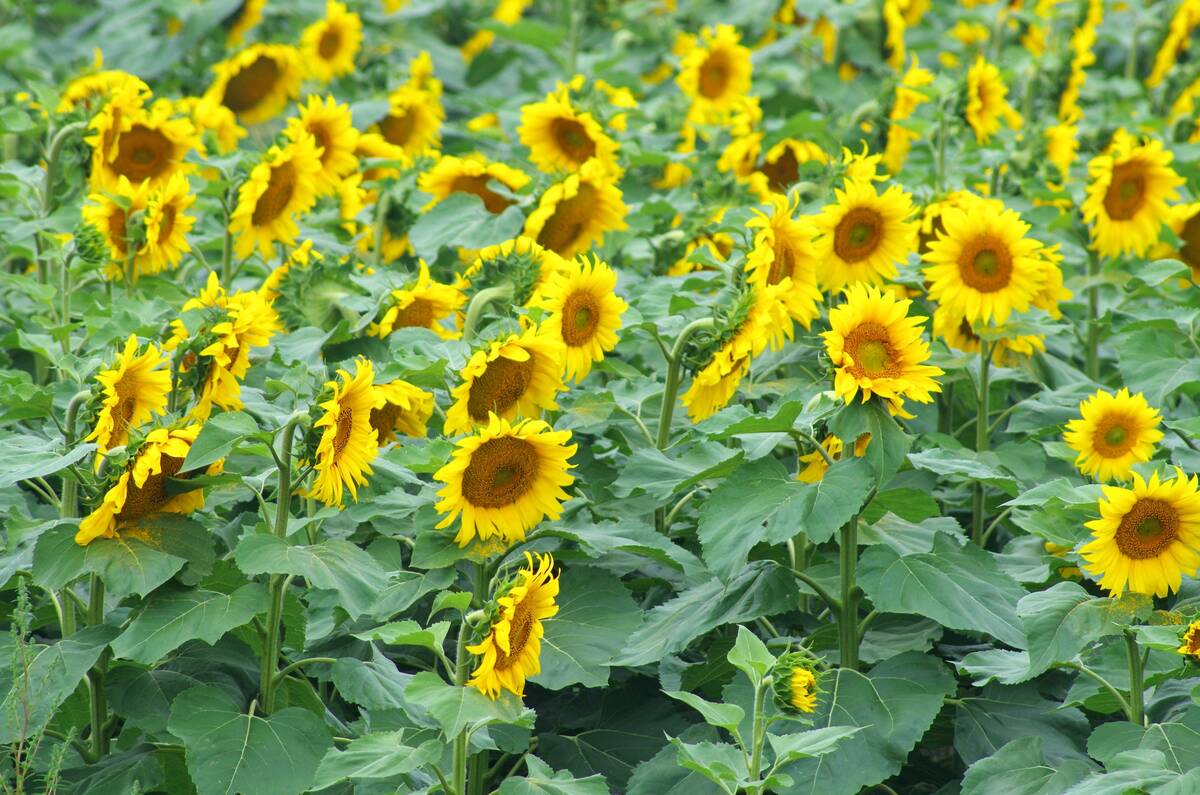FARGO, N.D. – Spring wheat yield potential in the United States Northern Plains is average with durum expected slightly above average, according to estimates of a wheat crop tour released Aug. 2.
More than 50 participants, including university agronomists, producers, and grain and milling industry officials, examined 402 fields across North Dakota, northern South Dakota and eastern Minnesota during the four-day spring wheat quality tour.
North Dakota is the top American producer of spring wheat and durum, and the tour members collectively were to cover more than 90 percent of the state’s wheat, said ADM Milling Co.’s Dave Green, one of the tour leaders.
Read Also

Made-in-Manitoba sunflower hybrid heads to market
Glacier FarmMedia – Manitoba’s confection sunflower growers will have a new seed option next spring that was developed specifically to…
Following the tour, members estimated a yield potential of 34.9 bushels an acre, down from last year’s tour estimate of 36.4 bu. but ahead of the five-year average of 33.4.
The U.S. Department of Agriculture measured last year’s spring wheat crop in North Dakota as yielding 36 bu. an acre and the entire country was at 30.7 bu.
USDA’s July 1 forecast of the 2001 North Dakota wheat crop is 35 bu., while the nationwide estimate is projected at 34.9 bu.
“We have the potential to have a really reasonable crop, so what we saw today was encouraging,” said Bruce Hamnes of U.S. Wheat Associates, Inc., who participated in the tour.
There were areas around the state that showed evidence of fusarium head blight or scab, a fungus that can shrivel wheat kernels and affect test weight. Spread of the disease over the next two weeks is crucial to the crop’s development, and rain could cause more scab, experts said.
“We don’t know how the hot and humid weather is going to affect the crop over the next few weeks,” said Hamnes. “The jury is really out because of the disease incidence. But planted acres are down this year, so if we get rain and the scab spreads, the lower yield could become a problem.”
Many farmers did not spray crops with fungicides as agronomists advised against it after dry weather in June. But heavy rains throughout July left many fields infested.
Participants examined 86 durum fields during the tour and estimated a yield of 28.3 bu. per acre. Last year’s durum estimate was 26.6 bu. while the five-year average was 26.8.
USDA pegged the 2000 durum yield at 27 bu. in North Dakota and 30.7 bu. nationwide. The department’s estimates for this year call for durum production of 28 bu. in North Dakota and 31.6 for the whole country.
There was also a considerable amount of lodging, or flattening of wheat fields from weather damage. The lodging was not counted in the yield potential. Most of the wheat on the tour was seen about two to four weeks away from harvest.














